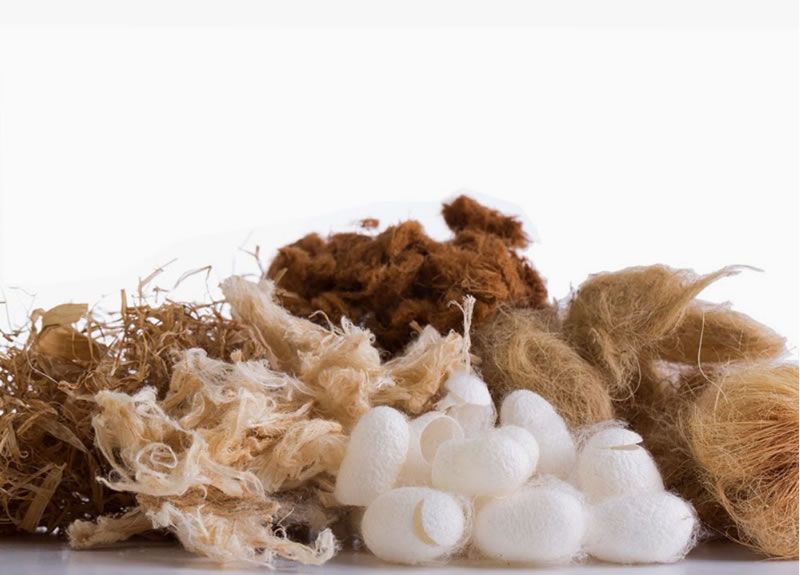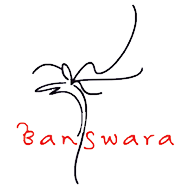NATURAL FIBERS AND ORGANIC YARN PRODUCTION

The smallest raw material of textile that can be bent and bent at a certain length and fineness is called “fiber”. At least 5mm of fibers used in the textile industry. must be in length. Fibers are divided into two groups as natural and chemical fibers. For detailed and categorical information about fibers, you can review our content on yarn types. In this article, we will talk about the place of natural fibers and organic yarn production in the textile sector.
Natural fibers are divided into 3 groups as vegetable, animal and mineral, and they constitute 65% of the total fiber production. vegetable fibres;
- Seed fibers (Cotton),
- Trunk fibers (Linen, hemp, jute, ramie)
- Sap fibers (Leaf, fruit fibers)
They are divided into 3 groups, and they are the natural fibers with the widest usage areas due to their easy health and maintenance conditions.
In fact, cotton, one of the seed fibers included in plant fibers, is the most important fiber source that meets half of the fiber production. Cotton grows in hot climates and in places that are not too rainy. Cotton flowers burst at maturity and become walnut-sized cocoons. Each chamber of the pods contains a coffee bean-sized seed granule. The surface of each grain is equipped with very fine seed fibres. Seed and cotton fiber are separated from each other during the ginning process in ginning machines. These fibers are compressed and taken to the spinning plants in bales. Cotton can be between 26mm and 38mm and more, it can absorb 85% of its own weight in moisture. Long fibers are highly resistant to breaking. It is friction and wear resistant.
From Cotton Fiber; Fabrics such as American cloth, Calico, Cotton georgette, Basma, Etamine, Opal, Pique, Gauze, Divitin, Cheesecloth, Flannel, Marble, Poplin, Muslin are obtained. It can be used in interlining, uppers and linings in shoe making.
Cellulosic fibers obtained from the stems of plants are called stem fibers. The most important stem fibers are linen, hemp, jute and ramie. The distinctive features of stem fibers are durability, low flexibility and different lengths.
OTHER ARTICLES
- Advantages and Usage Areas of Culvitation of Hemp
- The Place of Hemp in Yarn and Textile Industry
- The Place of Hemp in Yarn and Textile Industry
- What is Linen and Linen Production in Turkey
- Sustainability in The Textile Industry
- Tthe Global Effect of The Pandemic and Tthe Evaluation of The Textile Sector
- Naturel Fibers and Organic Yarn Production
- Hemp Production in Turkey, A Historical Brief and Global Hemp Market
- European Flax Certificate
- Search for Sustainable Production in Textile Raw Material and the Hemp Yarn
- Linen and Hemp's Simila and Different Aspects
- Hemp Fiber and Fabric Production
- Ecological Hemp Production
- Sustainability Studies in the Textile Industry - 2021
- What is Needed for Sustainability in the Textile Industry ?
- Organic Yarn Demand Increases As Textile Raw Material Crisis Escalates
- 2021 Data and 2022 Expectations for Ready-made Clothing Industry and Textile Raw Materials
- Fiber and Hemp Yarn Production and Yarn Export in the Turkish Textile Industry
Linen: Linen plants are of the type with long stems, few branches and many fibers. The fibers are found attached to each other in the bark part of the body. After the maturation period, it is extracted from the soil together with its root by means of machines and separated from its seeds. After the woody parts are crushed by crushing, the broken wood pieces are beaten by passing them through the vices. Long and short fibers are separated. After combing with special needle-tipped combs, the spinning process is applied. The length of the fiber bundles is 30-90 cm. while the single fiber length is 2-4 cm. are among. It is shiny because it is flat and without folds, it can absorb moisture up to 23% of its own weight, it crumples quickly, its resistance to friction is less than cotton, but its resistance to breaking is very high. It wears less and keeps cool, it is used in burlap, plain and patterned linen fabrics.
Linen fiber; It is used as summer tropical clothes, bedding and table sets, curtains, artistic fabrics, binding cloths, picture canvases, linen shoes and interlining.
Hemp: It is a textile plant also called hemp. As in linen, the fiber cells are in bundles in the bark part. Fiber production is carried out by rotting, forging and carding processes as in linen. Fiber length is 40-45mm. Cannabis is produced under government control; because female hemp contains a narcotic substance called marijuana. It is generally used in the production of rope, rope, sail, tent cloth, sacks and warp yarn of the carpet.
Jute: In the body of jute, fiber cells are found in bundles. The production of jute fiber is made by the digestion method. At the end of the digestion, the fiber bundles are separated from the trunk by hand peeling. The length of the obtained fibers is 18-25 cm. It has little flexibility. Its durability is inferior to linen and hemp.
Most of the jute fiber is used in making sacks, rope, twine and cover fabrics.
Ramie: Fiber cells are located in the body of the plant, just below the bark. Bark while the plant is still alive
parts are scraped with a knife and cleaned manually or by machines. In order to remove the gum on it, the digestion process is applied. The fibers soften and become better spun.
It is used to make various local apparel, upholstery fabrics, rope and rope.
In yarn production, quality is increased by applying fiber blends, increasing frictional strength and durability. Dressing properties such as heat insulation, moisture absorption and skin compatibility are increased, and the washing and drying properties are increased, making care easier. In textile production, the blending of fibers takes place in two stages: During yarn production, various cut (short) fibers are mixed. The blended fibers are made into spun fiber yarns. Yarns obtained from different fibers can be used in the production of textile surfaces. For this, natural fibers, natural fibers; chemical fibers can be mixed with chemical fibers. Mixtures made between natural fibers and chemical fibers also give positive results.
When the strength and good elasticity of synthetic chemical fibers and the healthy wearing properties of natural fibers are combined, a quality product is obtained. Cellulosic chemical fibers are widely used due to their softness and high moisture absorption properties. Very fine yarns are produced by adjusting the fineness and length of the fiber.








Filofibra Pazarlama A.Ş.
FILOFIBRA Pazarlama A.Ş. has been providing service to Turkish Textile market in the sale of fiber, yarn and fabric in Istanbul since 1986.
Address
-
Filofibra Pazarlama A.Ş
-
Levent Cad. Sülün Sok. No: 34 1. Levent, Istanbul
-
Tel : +90 212 283 3860/ 9 Hat
-
Fax : +90 212 283 3859
-
Email - This email address is being protected from spambots. You need JavaScript enabled to view it.
Address Abroad
-
Filofibra SA
-
Riva Caccia 1 / A Central Park Bldg. 6900 Lugano / Switzerland
-
Tel - +41 91 985 78 11
-
Fax - +41 91 985 78 08 - 09 - 10
-
Email - This email address is being protected from spambots. You need JavaScript enabled to view it.

